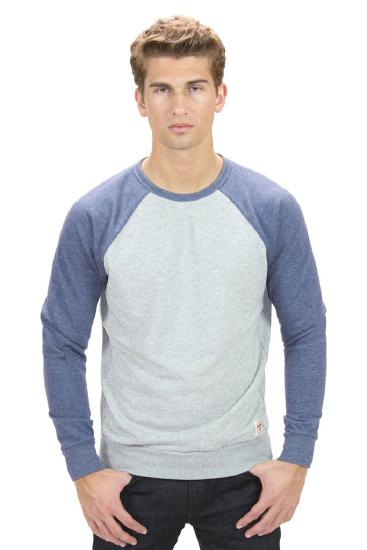3.4: Forming questions
- Page ID
- 44541
There are several ways to ask questions in Spanish. Depending on the question, you may use palabras interrogativas (question words), or you may not. This lesson will be divided into two parts: Asking questions using interrogative words and asking questions without interrogative words.
Las palabras interrogativas: Question Words
¿Qué? ________ ¿Qué clases tienes?
¿Cómo? ________ ¿Cómo se prepara el flan de queso?
¿Cuándo? ________ ¿Cuándo es tu cumpleaños?
¿Dónde? ________ ¿Dónde viven tus padres?
¿Adónde? ________ ¿Adónde vas después de clases?
¿De dónde? ________ ¿De dónde eres?
¿Por qué? ________ ¿Por qué estudias tanto?
¿Quién? ________ ¿Quién es tu profesor(a) de español?
¿Quiénes? ________ ¿Quiénes son tus profesores este año?
¿Cuál? ________ ¿Cuál es tu libro favorito?
¿Cuáles? ________ ¿Cuáles son tus películas favoritas?
¿Cuánto? ________ ¿Cuánto estudias?
¿Cuánto? ________ ¿Cuánto dinero tiene Bill Gates?
¿Cuánta?________ ¿Cuánta comida hay en la fiesta?
¿Cuántos? ________ _ ¿Cuántos amigos tienes en Facebook?
¿Cuántas?________ ¿Cuántas clases tienes? ¿¿
A note about ¿Cuál? and ¿Cuáles?
¿Cuál? and ¿Cuáles? cannot be followed immediately by a noun. As you can see in the examples, each is followed by a verb.
If you want to say something like Which shirt do you like best?, with a noun immediately following Which?, use ¿Qué? instead of ¿Cuál?: ¿Qué camiseta te gusta más: la roja o la azul?


Actividad 9
Rellenar el espacio. Use clues from the questions and the answers to fill in the blank with an interrogative word.
1. ¿________ es tu mejor amigo/a?.... Es Alma.
2. ¿________ se prepara la pasta italiana?.... Se prepara con salsa de tomate y ajo (garlic).
3. ¿De ________ son tus abuelos?…. Mi abuelo es de Rusia y mi abuela es de Hungría.
4. ¿________ es tu sabor de helado favorito?.... Mi sabor de helado favorito es chocolate.
5. ¿________ trabajas tanto?... Porque necesito dinero para las clases.
6. ¿________ es la fiesta?.... A las nueve.

Actividad 10
Preguntas personales. Answer the questions below in Spanish, then interview a classmate.
1. ¿Dónde estudias?
________
2. ¿Por qué estudias español?
________
3. ¿Cuándo estudias?
________
4. ¿Cuánto cuesta un libro de texto típico?
________
5. ¿Dónde trabajas?
________
6. ¿Cuál es tu clase favorita?
________
There are three ways to ask questions without using an interrogative word.
Let’s start with a phrase like: Alejandro es de Guadalajara.
Opción 1: Invert the subject and verb (put the subject after the verb).
¿Es Alejandro de Guadalajara?
When you invert the subject and verb, you are asking a genuine question.
Is Alejandro from Guadalajara?
Opción 2: Tag the end of a sentence: use no or verdad at the end of the sentence to say, “right?”
Alejandro es de Guadalajara, ¿no?
Alejandro es de Guadalajara, ¿verdad?
Alejandro no* es de Chile, ¿verdad?
*If a sentence is negative, use verdad. Affirmative sentences can use either option.
When you tag the end of a sentence, you are fairly confident that you know the answer and are just asking your audience to confirm that you are correct.
Alejandro is from Guadalajara, right?
Alejandro is not from Chile, right?
Opción 3: Rising intonation (say it like a question).
¿Alejandro es de Guadalajara?
When you put the subject in front of the verb, it adds an element of surprise or doubt. For instance, with our current example it sound like I was surprised to hear that Alejandro was from Guadalajara because I though he was from la Ciudad de México.
Alejandro is from Guadalajara?
However, if you do not state the subject, you don’t need to worry about this. I could just ask you, “¿Trabajas mucho?” or “¿Estudias en casa o en la biblioteca?” Because I didn’t put the “tú” anywhere in the sentence, I don’t need to worry about the order.

Actividad 11
Tres opciones. Take each statement you see at the bottom of the activity and alter it to:
Confirm what you already believe to be true:
Act a bit surprised:
Ask a genuine question:
Tus clases son interesantes.
Jorge trabaja en un restaurante.
Actividad 12
Veinte preguntas. Think of a well-known celebrity but do not tell your partner who it is. Your partner will ask you yes/no questions in an effort to guess your celebrity. You get 1 point for every question they ask before guessing the celebrity. Then, switch roles to guess your partner’s celebrity. The person with the most points at the end of both rounds wins!
Por ejemplo:
¿Es mujer?
¿Está viv@? (alive)
¿Es de los Estados Unidos?
¿Es alto/a?
¿Es rubi@?


